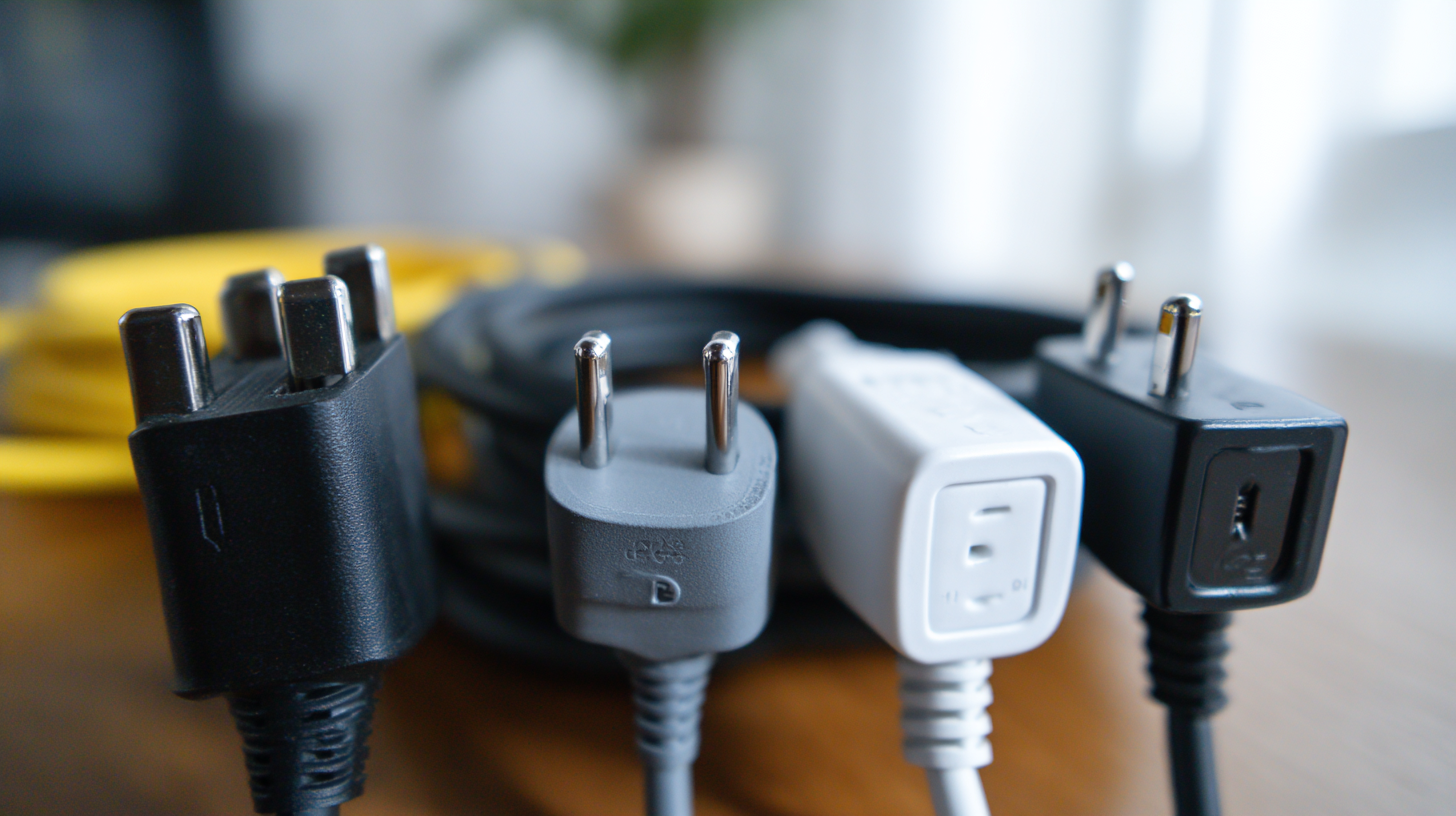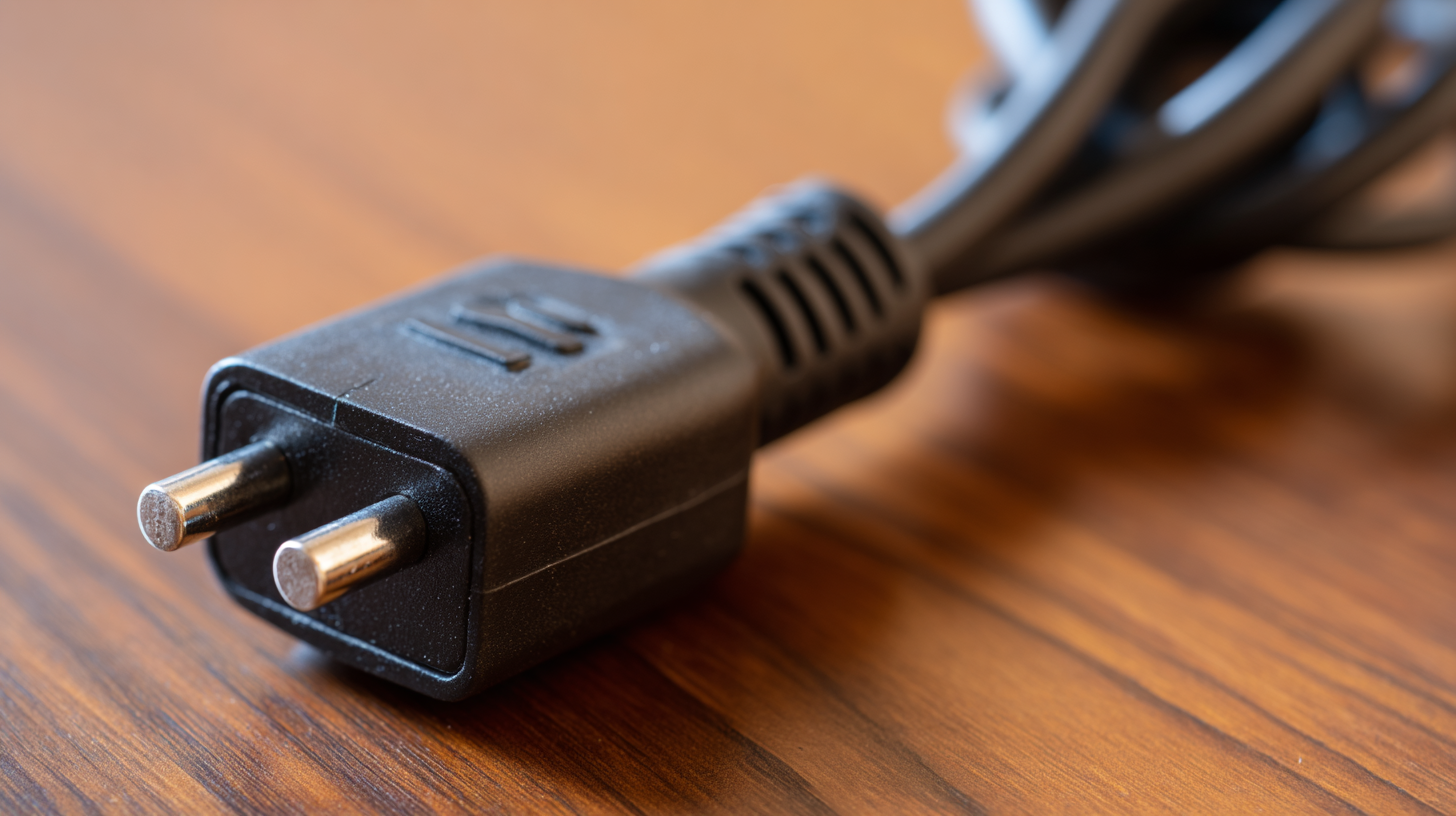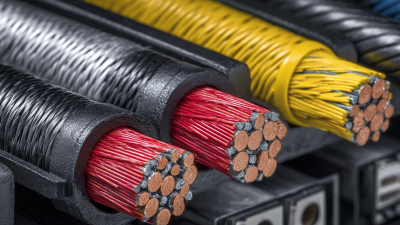-
- Products
- Indoor Household Cords
- Appliance Cords
- General Purpose Short-Length Cords
- General Purpose Extension Cords
- Landscape & Decorating Cords
- Bright Color Extension Cords
- Oil-Resistant Extension Cords
- Cold-Flex Extension Cords
- VividFlex Power Cords
- EXTREME All-Weather Cords
- Cord Management
- Task Lights
- Adapters & GFCI Devices
- Where to Buy
- About
- Careers
- Glossary
- Catalog
- Products
- Indoor Household Cords
- Appliance Cords
- General Purpose Short-Length Cords
- General Purpose Extension Cords
- Landscape & Decorating Cords
- Bright Color Extension Cords
- Oil-Resistant Extension Cords
- Cold-Flex Extension Cords
- VividFlex Power Cords
- EXTREME All-Weather Cords
- Cord Management
- Task Lights
- Adapters & GFCI Devices
- Where to Buy
- About
- Careers
- Glossary
- Blog
-
-

10 Essential Tips for Choosing the Right Power Cord Extension Cable for Your Needs
When it comes to selecting the right power cord extension cable, understanding the myriad options available is crucial for ensuring safety and efficiency in your electrical setups. According to the National Electrical Manufacturers Association (NEMA), improper use of extension cords contributes to over 3,000 residential fires each year, highlighting the importance of making informed choices. The market for power cord extension cables is projected to grow significantly, with a report by Research and Markets estimating a CAGR of 5.6% from 2021 to 2026. Whether you’re using these cables in home, office, or industrial settings, knowing the right specifications, lengths, and safety features can help you avoid hazards and maximize usability. This guide presents ten essential tips to help you choose the most suitable power cord extension cable for your unique needs, ensuring you make a reliable and safe investment in your electrical equipment.

Table of Contents
[Hide]
Understanding the Different Types of Power Cord Extension Cables
When selecting the right power cord extension cable for your needs, it's crucial to understand the different types available. Extension cords come in various lengths, gauges, and configurations that can cater to specific requirements. For instance, if you plan to use your cord outdoors, look for heavy-duty options that can withstand the elements. On the other hand, for indoor use, a lighter gauge may suffice unless you need to power high-wattage appliances.
One of the essential tips when choosing an extension cord is to always check the amperage rating. Ensure that the cord can handle the load of the device you plan to connect. Additionally, consider the length of the cord; while longer cords can offer more flexibility in placement, they may also increase the risk of voltage drop, especially for high-power devices. Lastly, always prioritize safety features like surge protection to safeguard your gadgets from voltage spikes, especially during periods of extreme weather or electrical instability.
As you prepare for travel, especially in regions with limited outlets such as airports and hotels, investing in a reliable power strip can be a game-changer. A compact and portable power strip will provide multiple outlets for your devices while ensuring that you are covered in case of any unexpected power needs on your journey. Whether you are charging multiple devices at once or need extra protection from electrical surges, the right choice can make your travels much more convenient.
10 Essential Tips for Choosing the Right Power Cord Extension Cable for Your Needs
| Tip | Description | Type of Extension Cable | Recommended Use | Length Options |
|---|---|---|---|---|
| 1. Check Power Rating | Ensure the cable can handle the total wattage of your devices. | Standard Extension Cable | General purpose use | 3ft - 100ft |
| 2. Type of Plug | Select the correct plug type for your outlets. | Light Duty | Small appliances | 6ft - 50ft |
| 3. Outdoor Use | Choose cables rated for outdoor use if needed. | Weatherproof Extension Cable | Outdoor equipment | 25ft - 150ft |
| 4. Number of Outlets | Consider how many devices you need to power. | Multi-outlet Extension Cable | Multiple devices | 6ft - 50ft |
| 5. Cord Thickness | Thicker cords can handle more power. | Heavy Duty | Power tools and heavy appliances | 10ft - 100ft |
| 6. Extension Cord Features | Look for surge protection or built-in safety features. | Surge Protector | Sensitive electronics | 6ft - 25ft |
| 7. Safety Standards | Make sure the cord meets necessary safety standards. | Generic Extension Cable | General usage | 3ft - 100ft |
| 8. Flexibility | Choose cables that are flexible for easier use. | Retractable Extension Cable | Convenient storage | 10ft - 25ft |
| 9. Reviews and Ratings | Check user reviews before making a purchase. | Various Types | General guidance | Varies |
| 10. Price Comparison | Compare prices from different sellers. | All Types | Budget considerations | Varies |
Assessing Your Power Requirements for Extension Cables
When choosing the right power cord extension cable, assessing your power requirements is crucial for safety and efficiency. Begin by identifying the total wattage of the devices you plan to connect. Each device should have a label indicating its power consumption, typically in watts. By adding the wattages of all devices you intend to use simultaneously, you can determine the minimum power rating your extension cable should support. It is essential to stay within the limits of the extension cord’s capacity to avoid overheating and potential fire hazards.
In addition to wattage, consider the voltage rating and the length of the extension cord. Ensure that the voltage matches your standard electrical systems—usually 120V in the U.S. Longer cables can lead to voltage drop, which may affect performance. Therefore, if you require a longer length, opt for a heavier gauge wire to counteract this loss. Always choose an extension cord certified by a recognized safety organization, as this assures compliance with safety standards, providing you with peace of mind while using your appliances.

Evaluating Cable Length and Flexibility for Your Space
When selecting a power cord extension cable, evaluating cable length and flexibility is essential for ensuring compatibility with your space. Longer cables can provide the reach needed in larger rooms or areas with obstacles, but they may lead to increased resistance and potential power loss. It’s crucial to measure the distance between your power source and the device you want to connect, while accounting for any furniture or other barriers that may affect cable placement.

Flexibility is another vital aspect to consider, especially if you need to maneuver the cable around corners or through tight spaces. A more flexible cable can be easier to manage and less likely to suffer from wear and tear over time. Additionally, think about the cable's thickness; thicker cables might offer better durability but can be less pliable. Balancing length and flexibility will help you find the ideal power cord extension cable that meets your specific needs without compromising on performance or safety.
Identifying Safety Ratings and Certifications for Power Cords
When selecting a power cord extension cable, one of the critical aspects to consider is the safety ratings and certifications associated with the product. Safety ratings indicate the cable's ability to handle electrical loads without risk of overheating or causing fire hazards. Look for extensions with certifications from reputable organizations, such as Underwriters Laboratories (UL) or the Canadian Standards Association (CSA), which ensure compliance with stringent safety standards.
Additionally, it’s vital to check the wire gauge of the extension cord. A lower gauge number indicates a thicker wire that can safely carry more current. For instance, an extension cord rated at 14 AWG (American Wire Gauge) is better suited for high-power appliances compared to a 16 AWG cord. Always ensure that the power cord’s specifications match your electrical requirements and verify that it is designed for the intended use, whether indoors or outdoors, to prevent accidents and ensure reliable performance.
Power Cord Extension Cable Safety Ratings Comparison
Choosing the Right Connector Types for Your Electrical Devices
When selecting the right connector types for your electrical devices, understanding the
diverse range of plugs and sockets available in different regions is crucial. For instance, Europe typically uses Type C, E, and F connectors, which can differ significantly from those found in North America or Asia. According to industry reports, nearly 25% of international travelers face compatibility issues with their devices due to improper plug adapters, underscoring the importance of choosing the right model before you travel.
In 2025, an array of plug adapters will be available in the market to cater to various needs, with key features such as compact design, surge protection, and versatility taking center stage. Top picks often highlight adapters that can accommodate multiple devices simultaneously while ensuring safety through certified surge protection—essential given that electrical surges can damage sensitive electronics. By prioritizing both functionality and reliability, travelers can ensure that their devices remain powered regardless of their destination. Always refer to detailed buying guides and product comparisons to make an informed decision.


